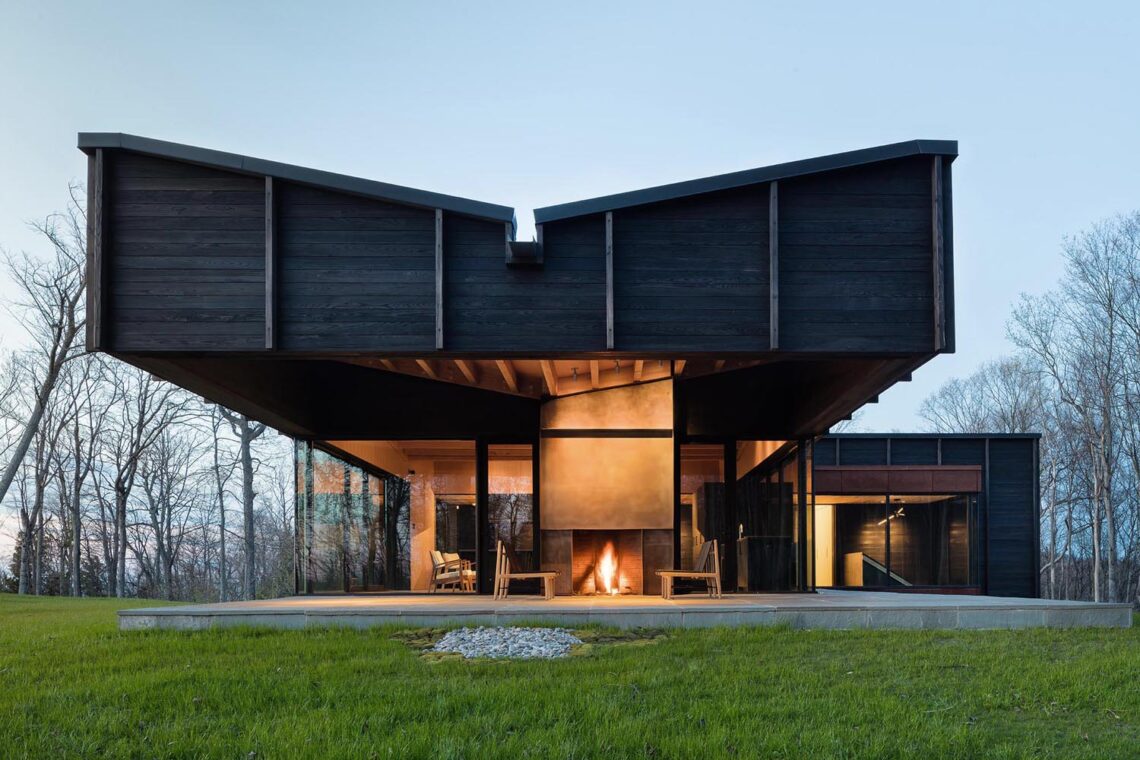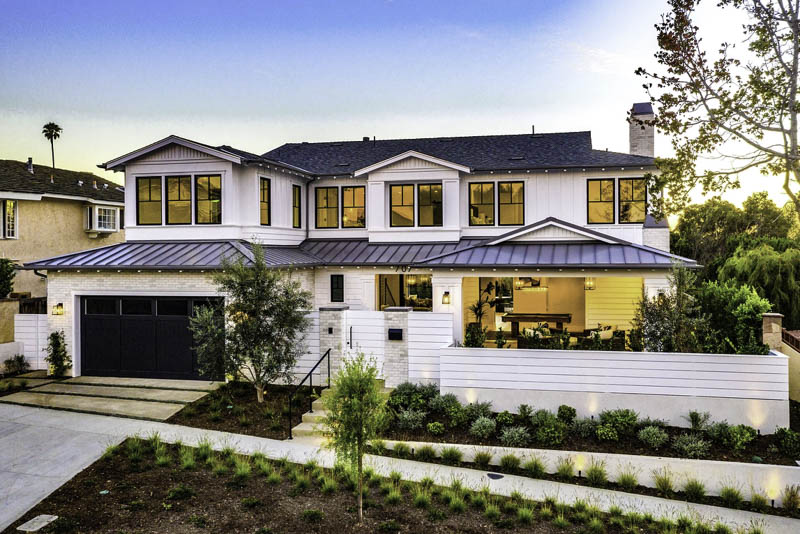Leading Trends in Residential Architecture You Must Learn About
As household style remains to develop, a number of compelling trends are forming the means we design and inhabit our living rooms. Trick growths such as lasting structure techniques, the assimilation of clever home innovation, and the rise of modular homes underscore a significant shift towards both performance and environmental obligation. In addition, principles like open plan living and biophilic layout are redefining our interaction with space and nature. Comprehending these patterns not only informs layout choices but additionally exposes wider implications for way of life and community - residential house architect. What might these developments suggest for the future of domestic living?
Sustainable Structure Practices
A raising variety of domestic projects are accepting lasting building techniques, driven by a growing awareness of environmental impact and power performance. This change is characterized by the combination of green materials, energy-efficient layouts, and innovative building techniques. Building contractors and property owners are progressively prioritizing making use of renewable energies, such as bamboo and recycled steels, which not just minimize the carbon impact but likewise improve the durability and visual allure of buildings.
Incorporating energy-efficient systems is one more essential element of sustainable structure - residential house architect. Functions such as high-performance insulation, energy-efficient windows, and solar panels are becoming standard in new property styles. These aspects not just add to reduced energy intake yet additionally provide substantial long-term cost savings for property owners
Moreover, the layout of lasting homes often highlights all-natural light and air flow, lowering the reliance on fabricated lights and environment control systems. Landscaping methods, such as xeriscaping, additional promote sustainability by decreasing water usage.
As the need for sustainable living services proceeds to increase, the property design industry is positioned to introduce and adjust, guaranteeing that future homes are not only eco responsible but practical and additionally comfy for their residents. - residential house architect
Smart Home Innovation
Smart home innovation is transforming the way property owners communicate with their home, boosting security, ease, and power administration. This ingenious strategy integrates different tools and systems, permitting customers to regulate their homes from another location or via automated procedures. Central to this pattern is making use of clever gadgets such as thermostats, illumination, protection cams, and devices, all attached using the Net of Things (IoT)
One of one of the most appealing attributes of smart home technology is the capacity to customize settings for optimal energy effectiveness. Homeowners can keep track of energy use and readjust lighting, home heating, and air conditioning based upon their regimens, substantially minimizing energy costs. Advanced protection systems furnished with wise locks and surveillance cams provide tranquility of mind, enabling remote tracking and signals to potential safety and security violations.
Integration with voice-activated assistants improves customer experience, allowing house owners to regulate devices with basic voice commands. As technology remains to progress, the capacity for smart home systems to improve top quality of life expands, making them a necessary factor to consider in modern property design. Eventually, clever home modern technology is not simply a fad yet a basic shift towards much more intelligent living settings.
Open Concept Living
Open up concept living has become a specifying attribute in modern residential architecture, defined by the removal of traditional barriers between spaces. This design viewpoint advertises fluidness and connection within the home, permitting a smooth shift in between locations such as the kitchen area, eating, and living rooms. By eliminating dividings and wall surfaces, open principle layouts create a feeling of spaciousness, cultivating a welcoming ambience that improves social communication.

In addition, this strategy to property style straightens with minimalism, focusing on practical simplicity and aesthetic coherence. House owners value the versatility of these designs, which can be quickly adjusted to mirror personal style via furnishings setup and decor. As open principle living remains to obtain traction, it remains a testimony to progressing household dynamics and the desire for homes that boost link and comfort.
Biophilic Style
Biophilic style has become significantly significant in residential architecture, highlighting the intrinsic connection between people see it here and nature. This design approach looks for to incorporate all-natural aspects into living rooms, consequently fostering a sense of wellness and enhancing the lifestyle for passengers. By integrating features such as natural light, plant life, and organic products, biophilic layout promotes an unified partnership in between indoor settings and the environment.
Crucial element of biophilic style include large home windows that provide unhampered views of outside landscapes, living wall surfaces that present greenery into interiors, and open layout that encourage air flow and natural light penetration. Water attributes, both inside and outside the home, serve to produce comforting atmospheres and boost sensory experiences.
Moreover, making use of sustainable products not only supports environmental stewardship but also contributes to healthier indoor air high quality. As understanding of ecological issues boosts, home owners are progressively focusing view publisher site on designs that reflect their connection to nature. Essentially, biophilic layout not just raises aesthetic charm however additionally addresses mental and psychological requirements, making it an essential pattern in modern residential design.
Modular and Prefab Houses

Furthermore, prefab and modular homes are made with sustainability in mind. Numerous suppliers make use of energy-efficient systems and environmentally friendly materials, such as solar panels and progressed insulation strategies, adding to reduced power usage and reduced energy bills for property owners. The flexibility of style choices enables modification, dealing with diverse visual choices and functional demands.
As the need for budget friendly real estate remains to increase, prefab and modular homes offer a sensible option, dealing with both economic and ecological challenges. Communities are progressively acknowledging the potential of these structures, integrating them into metropolitan and rural setups. Overall, the pattern toward prefab and modular homes indicates a shift towards much more this contact form lasting, reliable, and adaptable living atmospheres, making them a pivotal facet of contemporary property architecture.
Verdict
Sustainable structure practices and smart home modern technologies enhance efficiency and comfort, while open concept living and biophilic style foster social communication and a connection to nature. The surge of prefab and modular homes offers adjustable and affordable options, mirroring a broader shift in the direction of functional and responsible living.
Key growths such as sustainable building techniques, the integration of smart home technology, and the rise of modular homes emphasize a substantial change in the direction of both functionality and environmental obligation.The increase of prefab and modular homes has actually transformed the household style landscape, using innovative options for efficient and lasting living.Moreover, modular and prefab homes are made with sustainability in mind. On the whole, the fad towards prefab and modular homes signifies a change towards much more lasting, effective, and adaptable living environments, making them an essential facet of contemporary residential style.
Sustainable building methods and clever home modern technologies enhance effectiveness and convenience, while open concept living and biophilic style foster social interaction and a connection to nature.